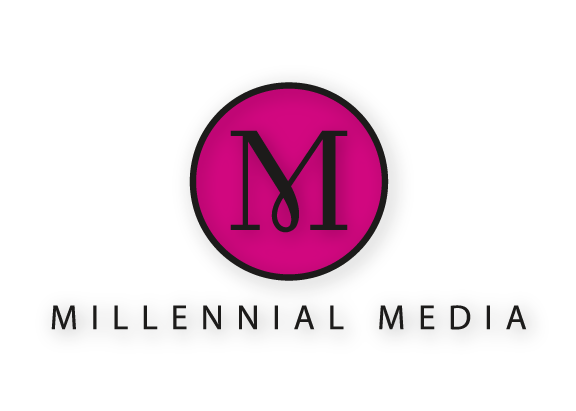Five Effective Communication Strategies for 2018
by Mica Olinghouse
Disclosure: This page contains affiliate links. If you click through and purchase a product, we will earn a commission at no additional cost to you.
Ah, January…the first month of a brand-new year! This month marks the beginning of so many new visions and dreams, goals and projects, hopes and deadlines. Like many of you, I have been extremely focused, preparing myself and my calendar for the next 12 months. I’ve organized closets and drawers, set financial goals, created a new vision board, and set up new projects for the year. The last few weeks have flown by in such a blur that I can hardly believe February is upon us next week! How is that even possible?!
One thing I’ve learned as a communications professional, entrepreneur, wife, and co-founder of a fledgling ministry is that organization, structure, and scheduling are critical to success. Without intentional time set apart to brainstorm, envision, plan, and execute, I would not be able to carry out my various responsibilities correctly. Planning and organization—even for sanguines like me—is essential to an orderly, productive life!
Of course, with my particular training and profession, I always emphasize clear-cut communication keys and strategies. Monitoring the flow of communication while keeping direction, vision, and order in front of myself at all times is an absolute necessity for balance and productivity. I’ve learned that without structure and intent in my communication, my various endeavors can get tossed, turned, and eventually trashed by the wayside. Communication is absolutely vital to success!
With that thought in mind, I’d like to share with you a few communication tips I’ve learned in my professional journey. These are especially helpful if you run an organization, direct a team, lead a vision, or sell a product or service. Additionally, these strategies can be easily replicated by you or anyone on your team. If you’ll implement these simple steps, I guarantee your communications department will run smoothly and proficiently this year. (Check the bottom of the article for this month’s recommended reading!)
1. BRAINSTORM YOUR CONTENT
January’s prominence on the calendar signifies the first page of a blank slate. You have the entire next 12 months to generate whatever content you wish that aligns with your vision or message. That gift of time is precious! Use it wisely.
In planning for 2018’s communication schedule, I recommend taking some time to brainstorm your content. What messages are important to you this year? What product, service, or book are you selling? Will you be launching a new ministry initiative or hosting a special meeting or event? What theme has the Holy Spirit been speaking to your heart?
As you begin brainstorming your content, your answers to the above questions are essential, because your communication always needs to align with your vision and your heart. Whatever is closest to your heart is what you should be amplifying continually through your public communication.
RELATED: FIVE WAYS TO REPURPOSE HIGH-VALUE CONTENT
2. CREATE AN EDITORIAL CALENDAR
After you’ve sifted through your key topics and messages, it’s time to start organizing those pieces of information. In the publishing industry, we call this an editorial calendar. Basically, the goal is to break down all your content into quarters, months, weeks, and days so it becomes manageable. This is where you’ll determine your overall content strategy, what you’re going to communicate, when you’re going to say it, and how you’re going to do it.
The editorial calendar can be digital or printed, located in a file on your laptop or on a shared online portal with your team. I’m a bit old fashioned and actually prefer a printed copy of all my editorial calendars assembled in a nice presentation folder like this.
Now, keep in mind that editorial calendars are fluid documents and can be updated as often as needed. I suggest starting with the long-term goal in mind such as the broader themes you want to cover this year, and then break them down by quarter and then by month. This way, you can stay focused on the immediate communication goals while still keeping the big picture in mind.
3. DETERMINE YOUR PRIMARY MEDIA CHANNELS
Once you’ve established your editorial calendar, it’s time to begin mapping out your media and online platforms. How will you communicate your message, your event, or launch? Will you be outsourcing to an agency or using your in-house team? What media is more accessible and cost-efficient for your budget? Will your copy be integrated with design or video? Will you be communicating primarily online? If so, what specific online platforms will you be using? All of these questions are important to consider, especially if you have a lean budget and even tighter deadline.
While today’s media options are endless, one low-cost choice is always social media. Even if your budget and staff are small, you can still create a consistent and visible voice just through your Facebook, Twitter, and Instagram posts. If you prefer video, utilize the Facebook Live or InstaStories feature. And of course, there’s always YouTube! No matter what social media platform you choose, just be sure to keep your tone and message consistent with your overall vision. Whatever you do, don’t let all the noise out there distract you from your primary purpose, which is to communicate YOUR message to your audience in your own unique way.
RELATED: FIVE APPS TO HELP YOU DESIGN AMAZING IMAGES FOR SOCIAL MEDIA
4. SCHEDULE CONTENT AHEAD OF TIME
Now that you’ve thoroughly fleshed out your vision and content, it’s time to set it up and get it out there to the public. The best time-saving strategy for mass communication—especially for online channels—is to schedule your content ahead of time. This orderly approach allows you and your team to work together in a timely and efficient manner without compromising style or quality.
With the variety of online choices, you can schedule your content ahead of time in several different ways. I personally prefer HootSuite for Facebook and Twitter posts and MailChimp for email campaigns. Both of these service providers have free options and are easy to use. I also prefer scheduling content one to two weeks ahead, but some others prefer a one to two-month window. Just choose a method that works for you and tailor your approach as needed.
RELATED: HOW TO TRASH THE PAPER NEWSLETTER AND EMBRACE EMAIL MARKETING
5. OUTSOURCE WHAT YOU CAN’T DO, DON’T WANT TO DO, OR DON’T HAVE TIME TO DO
Finally, as you prepare your communication schedule this year, remember: You can always outsource. If you’re responsible for many departments, wear a lot of hats, or need the extra time to pray and prepare your messages, don’t spread yourself too thin. Relieve the stress and simply hire an agency (like us!) that can help deliver your content in a professional, timely manner. We know what works, what doesn’t, and how to keep your timeline on track.
As you prepare for this new year, remember to communicate clearly to your team, your followers, your readers, and your customers. If you’ll simply take time to brainstorm your content, determine your primary media channels, create an editorial calendar, schedule content ahead of time, and outsource the excess, your heart and your vision will resonate with all who hear!
Do you need help with your online content strategy?
Love it? Share it!
Recommended Reading
LOVE THIS ARTICLE?
Don’t Miss Out on Professional Tips & Secrets!
Get the Fusion Blog delivered straight to your inbox.


